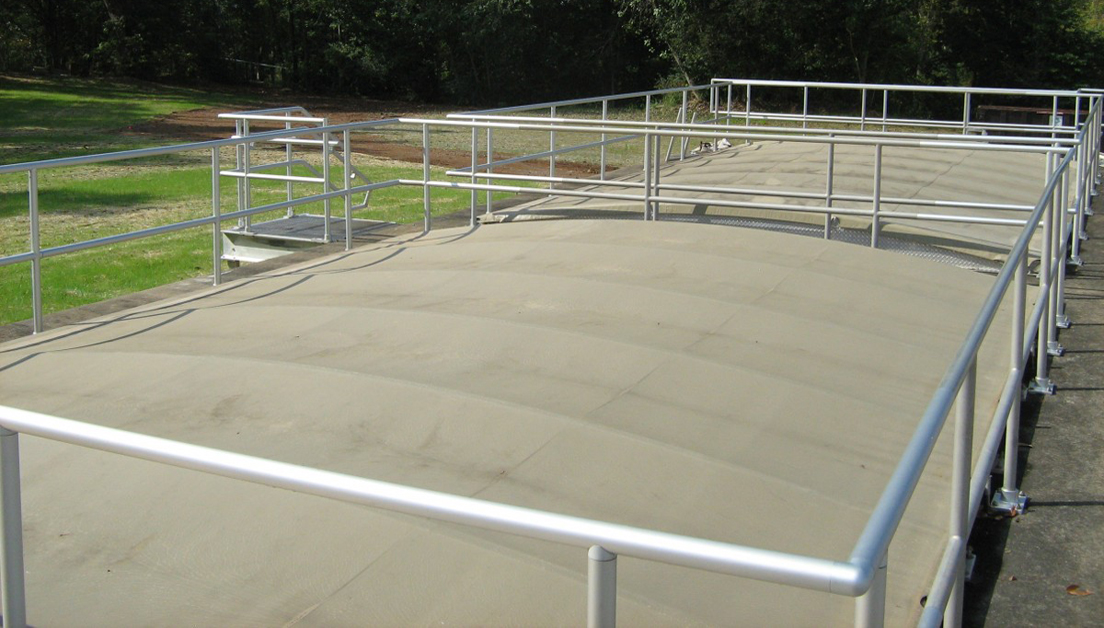The Clarksville Water System consists of a water treatment plant and a distribution system that serves approximately 160,000 people, making it one of the largest in Tennessee. The Clarksville Water Treatment Plant is situated on an 11 acre (4.5 hectare) site beside the Cumberland River, the city’s source of water, and has an estimated capacity of 28 MGD with peak rates of 32 MGD.
Challenge
Severe algae growth in the Clarksville Water Treatment Plant’s six sedimentation basins had become a concern. Algae grew rampant on basin walls and floors, which caused taste and odor issues and elevated disinfectant by-product production. Water plant maintenance personnel removed the algae build-up, but it accumulated so rapidly that maintenance on the basins was required four to six times per year.
Plant management knew they needed to block sunlight to correct the problem. Operators had experimented with several options, including the addition of carbon to the water to partially block sunlight and limit algae growth, and a trial tarp-style cover on the tube settlers. Although they saw positive indications of algae control, a permanent solution was required. Plant management determined that the best long-term method of controlling the algae would be installing basin covers, so they retained an engineering consultant to investigate options.
Solution
After evaluating basin covers, plant management ultimately chose retractable, structurally supported covers from Evoqua’s Geomembrane Technologies to help solve its algae issue.

The cover system consists of retractable vinyl coated fabric panels tensioned over supporting aluminum arches. The fabric covers are UV-protected, strong, and can be quickly disconnected and easily rolled open to provide access to tank internals. Custom weighted fabric hatches added to the covers allow easy access for sampling and inspection when necessary.
" We haven’t had a minute’s worth of trouble with them. "
Results
By using Evoqua’s Geomembrane Technologies™ brand structurally supported covers to block sunlight from entering its basins, the Clarksville Water Treatment Plant has corrected its algae problem. Plant operators rolled open the covers six months after installation to find that the tank walls, including the tube settlers, were algae-free.
Servicing the basins meant wasting valuable resources—including water and manpower—but now operators are free to perform other their duties. The structurally supported covers allow the plant to combat algae without the use of chemicals that promote the formation of disinfection by-products.
In addition to controlling algae at the plant, the covers are stopping dirt and debris from entering the basins. The plant, which is surrounded with trees, previously struggled each autumn with leaves and branches falling into the basins and settling to the bottom. This is no longer an issue thanks to the covers.
Moreover, since the covers are custom-designed for local code loads, they hold up very well even in bad weather. The structural integrity of the covers was proven one winter when several 4-6 inch (10-15 cm) snowfalls accumulated on the covers. “Investing in the covers was one of the best things we ever did. They have resulted in unquestionable savings,” says Whittinghill.
